Lisette had never heard about Biosphere 2 before Michael had added it to our itinerary. Here’s the basic background about it today: It’s a large, self-contained ecological research facility in Oracle, Arizona. The facility spans 3.14 acres and has various biomes, including a rainforest, ocean, desert, mangrove wetlands, and agricultural areas. It’s now run by the University of Arizona as a research center for studying climate change, environmental science, and the impact of human activity on ecosystems.
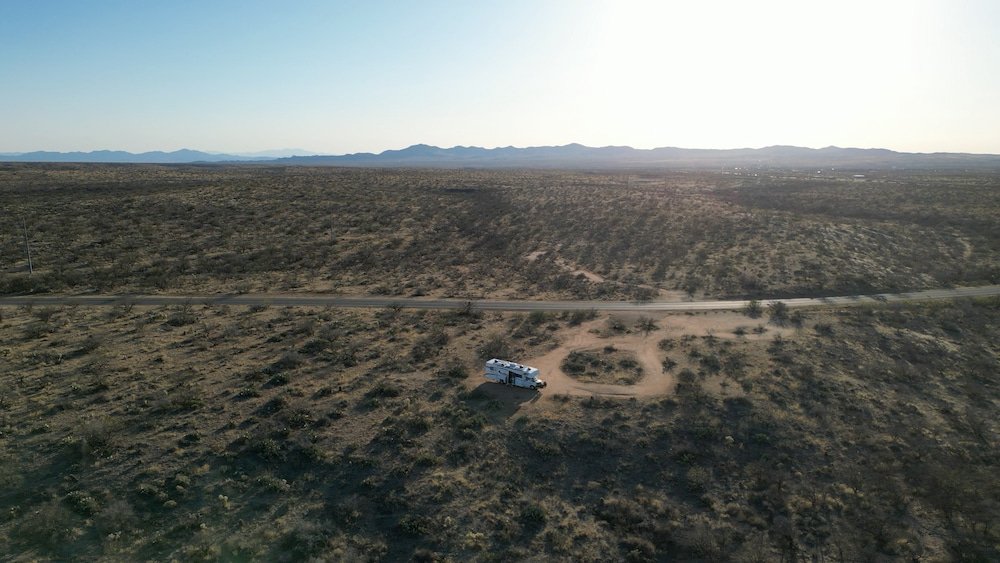
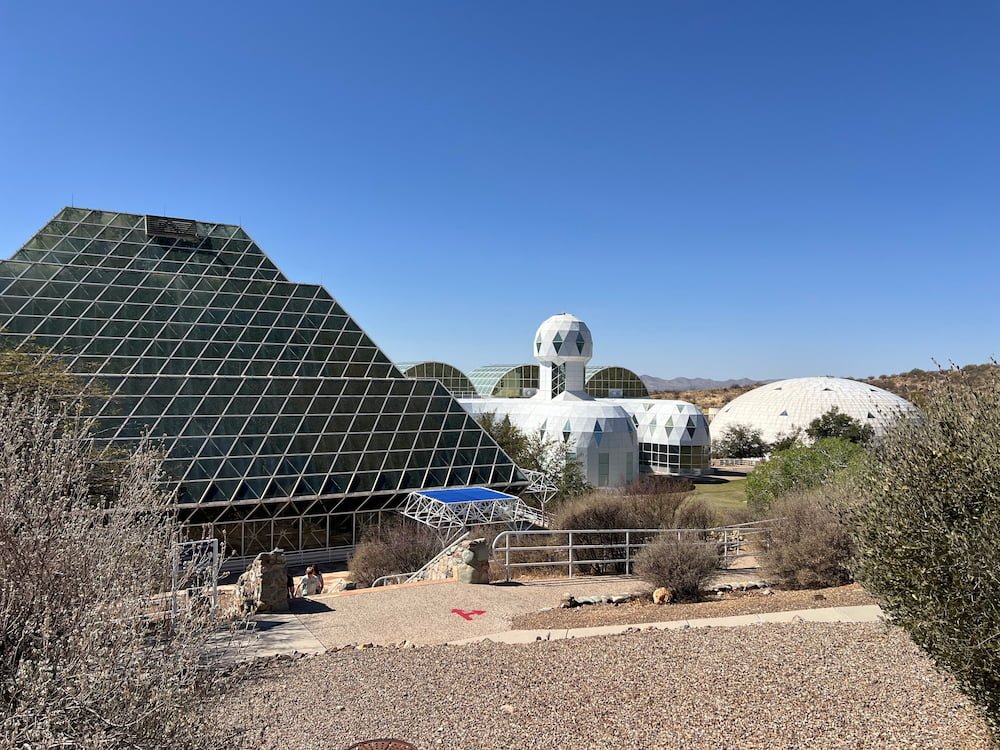
But the history of Biosphere 2 is just as fascinating. It was originally built in the late 1980s to study the interactions between different environments and test the feasibility of space colonization. The first mission, which was between 1991-93 and had 8 people living inside, closed off to the rest of the world. Oxygen levels inside fell dangerously low, forcing researchers to pump in extra oxygen. There was a cockroach and ant infestation. They were meant to be self-sufficient and grow their own food, but the crops didn’t produce enough, which meant that they all quickly lost a lot of weight and were always hungry. Crew members had a psychological breakdown. And after the mission was completed, former Trump advisor, Steve Bannon took offer to manage Biosphere 2, with the second mission that took place that same month sabotaged from the inside by members of the first crew. (The Guardian wrote this fantastic article that’s worth the read)!
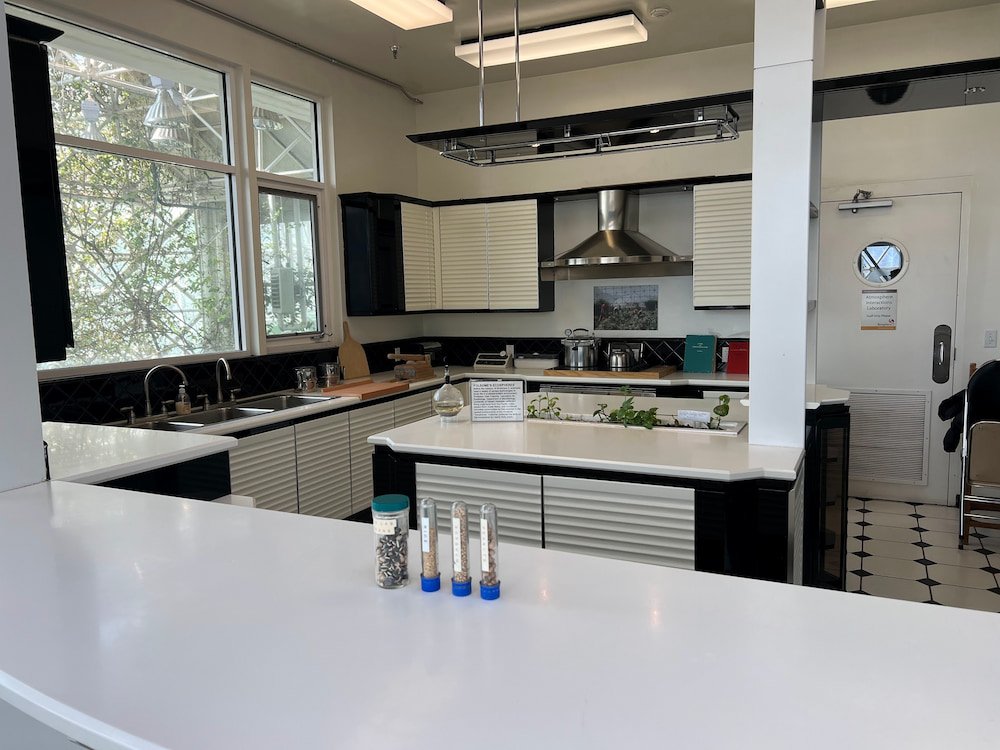
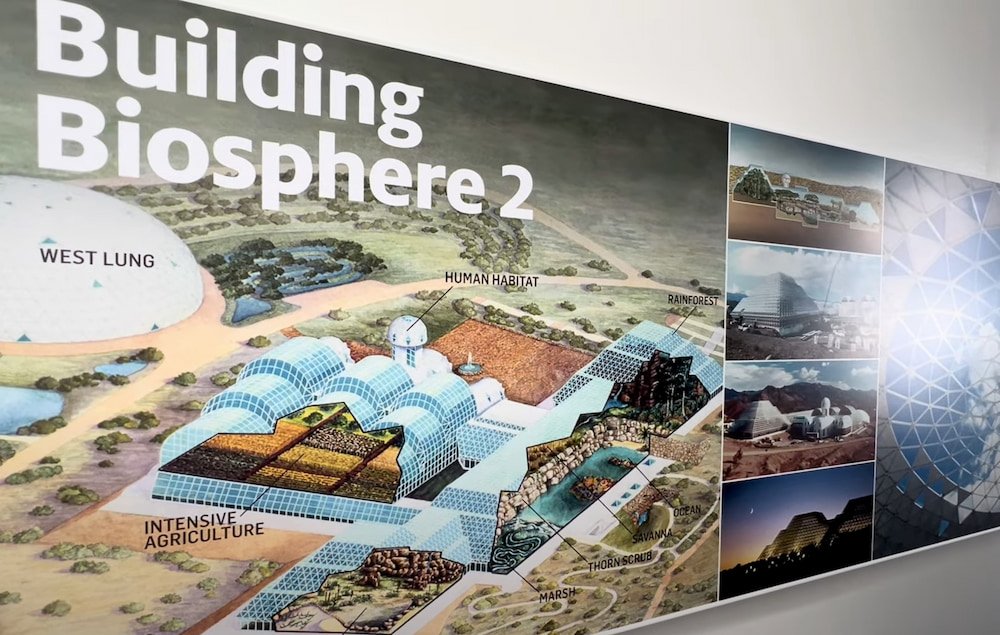
While Biosphere 2 doesn’t delve into its wild history when you visit, you can still see the original kitchen where the crew ate and their rooms. When you visit, there’s an app that you can download to do a self-guided tour (bring headphones) while you’re there, to take in all the different environments you’re seeing. For example, the LEO (The Landscape Evolution Observatory) at Biosphere 2 is the world’s largest Earth sciences experiment, designed to study how landscapes evolve over time. It consists of three identical artificial landscapes, with over 1,800 sensors monitoring water, carbon, and energy cycles for scientists to track changes in soil, topography, and biology as they evolve. By controlling climate conditions within Biosphere 2, researchers can simulate different environmental scenarios and study how climate change impacts water resources and ecosystems in arid regions, and better understand and prepare for the effects of climate change. We had a great time touring the facilities, and were impressed with the changes in climate that we noticeably felt when walking from one room to the next! It’s a stop that’s off the beaten path that’s definitely worth checking out.
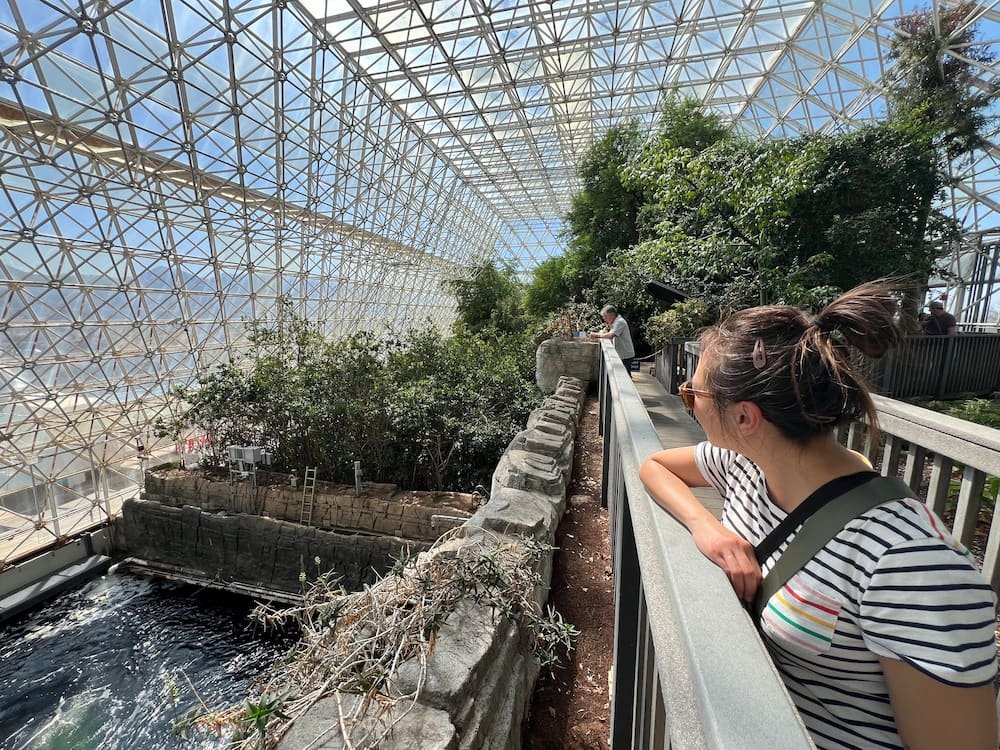
Tastes of Tucson
About 45 minutes’ drive from Biosphere 2 is the picturesque and sunny city of Tucson, which gets about 325 days of sunshine each year. It became the first city in the world to regulate light pollution specifically for space observation, back in the 1970s. UNESCO also named it as the first US Creative City of Gastronomy (the other US city with this designation is San Antonio in Texas), thanks to its deep agricultural roots going back more than 5,000 years. Today, you can still try many dishes that make use of the fruits of the prickly pear and giant saguaro cactus, mixed with dishes making use of corn that arrived from Mexico over 4,000 years ago, and international cuisine from the many immigrants that call Tucson home. After Mexico achieved independence from Spain in 1821, what is now Southern Arizona was part of Sonora, and its food culture shared the distinctive features of Sonoran-style food of northwestern Mexico. These include the use of flour tortillas, an emphasis on beef cooked over mesquite wood fires, and a blending of native and Mediterranean ingredients.
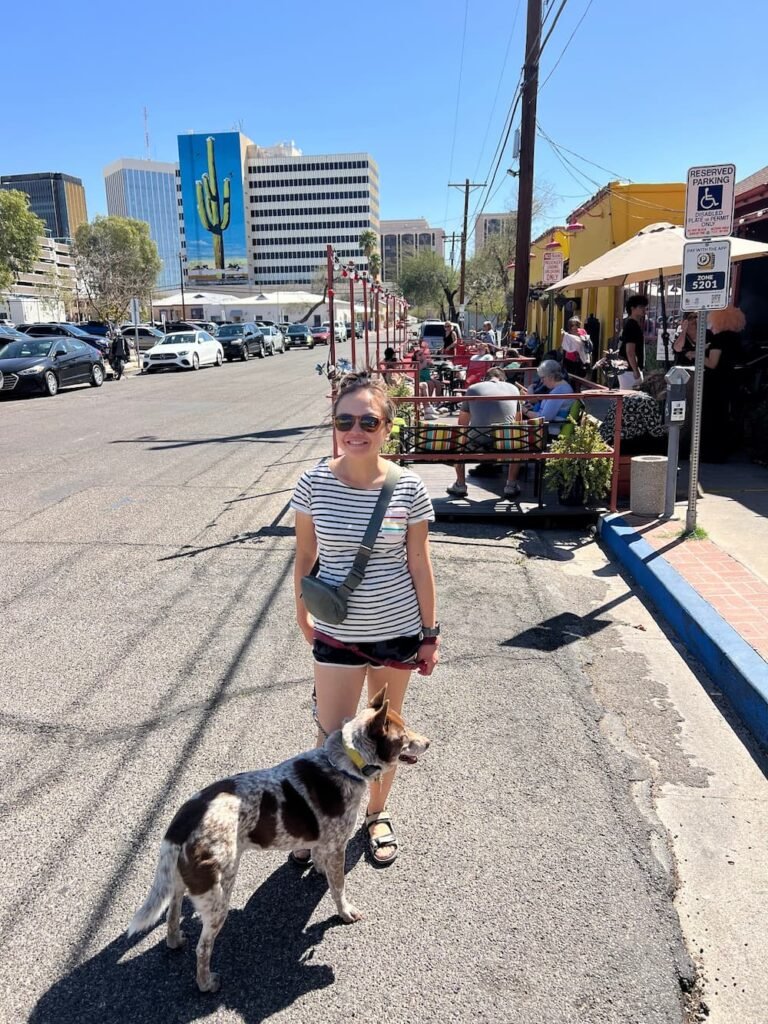
One of the most popular restaurants in Tucson is El Charro Cafe, the oldest Mexican restaurant in Tucson. Apparently it is the birthplace of Chimichanga (a deep fried burrito), which was invented by the owner when she accidentally dropped a burro into the frying pan. The menu is extensive and there are many vegetarian, plant-based and gluten-free options, with dishes including ensaladas, sopas, enchiladas, tamales, burros, tacos, chile rellenos, fajitas, margaritas, and more! Lisette was thrilled to have plant-based options on the menu and we We ordered the Hola Hemp plant-based tamales (hemp seed, organic corn, flax, nopales and quinoa, featuring arroz blanco, green tomatillo sauce and frijoles charros), and some carne seca (in Spanish “dry meat”, a popular way of drying beef in the Southwest) enchiladas to go. The portions were generous and everything we ate was absolutely scrumptious! Highly recommend it!
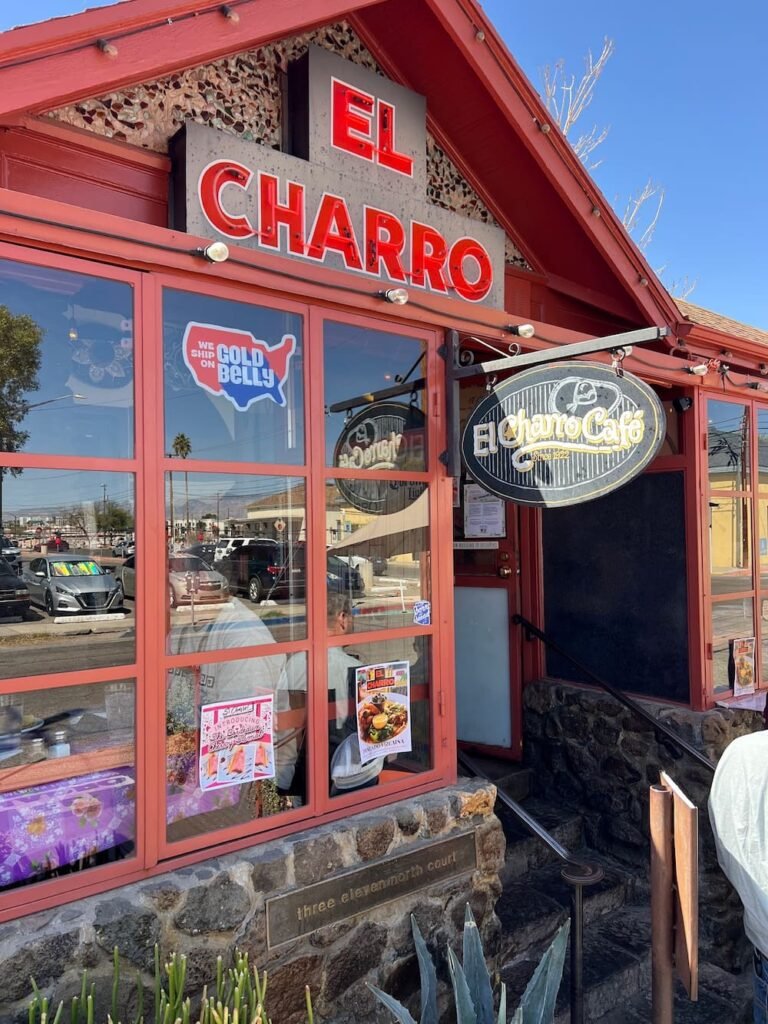
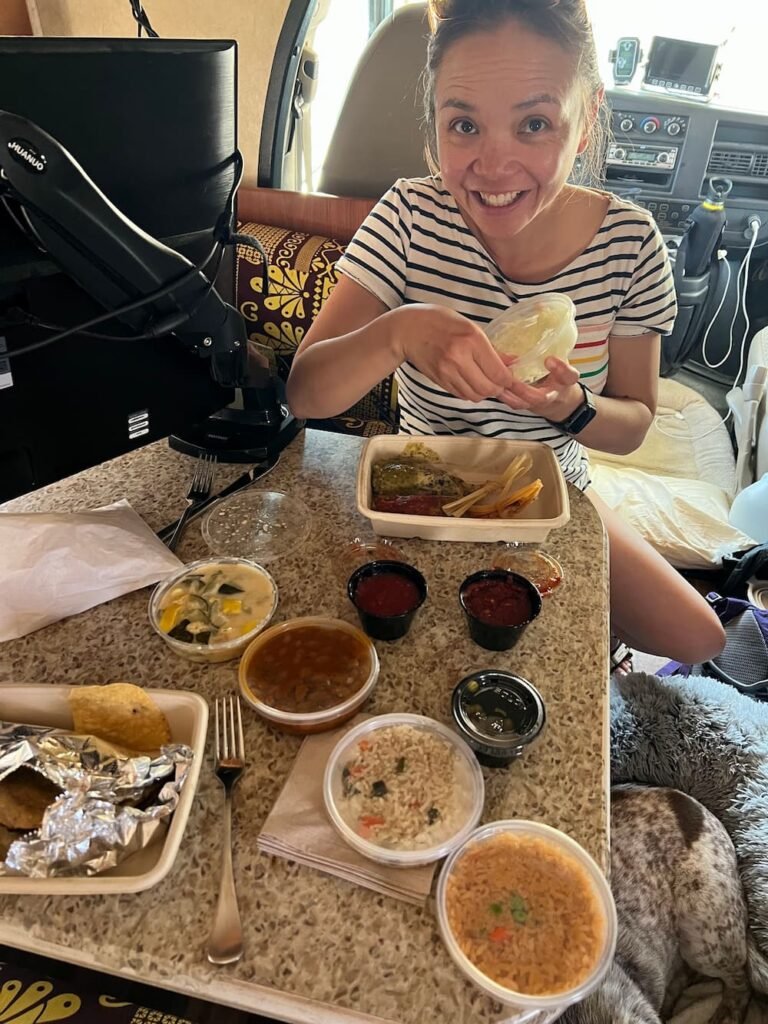
We then took our full bellies to check out the Rattlesnake Bridge, a bicycle and pedestrian bridge just east of downtown Tucson. Unfortunately the bridge was closed so we couldn’t walk across it, and it was eerily quiet when we went, despite it being the afternoon.
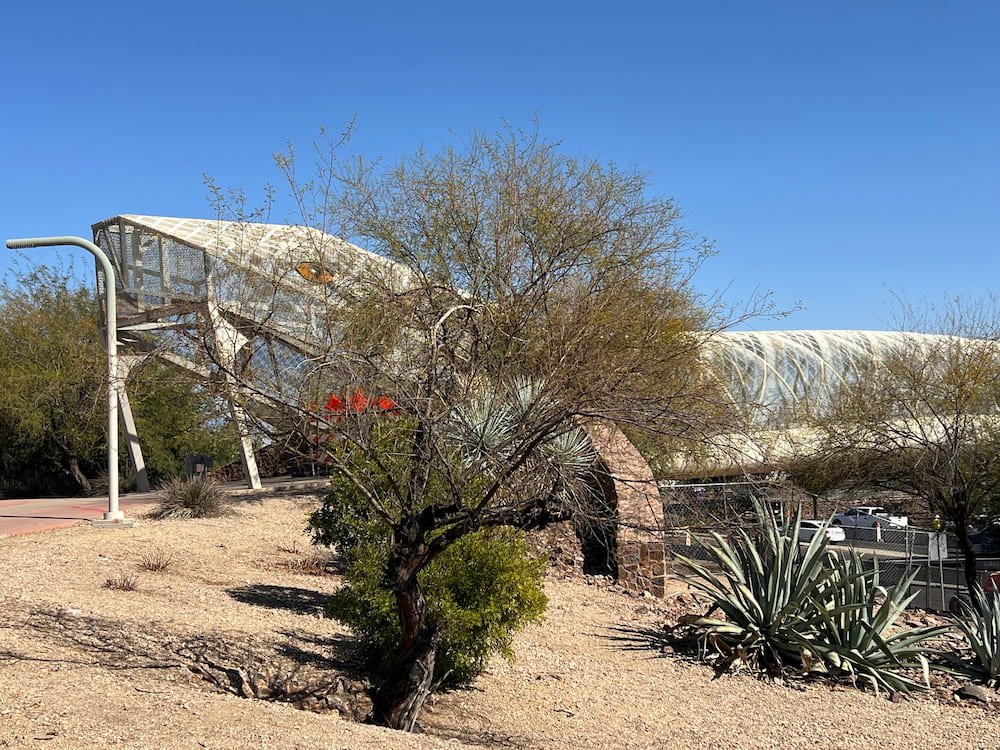
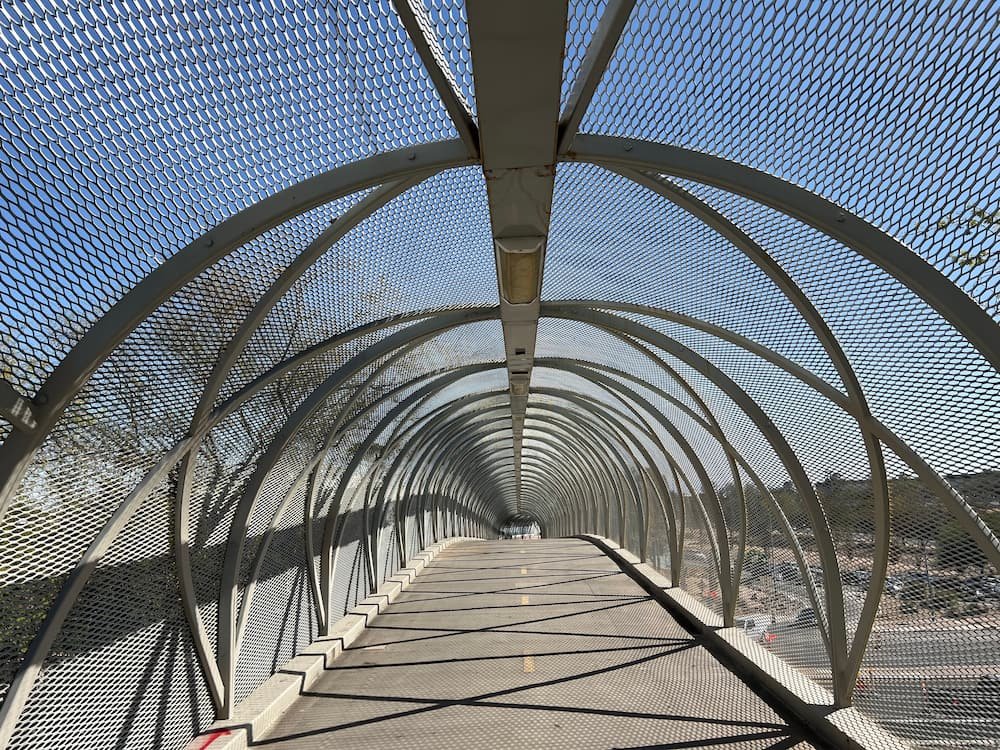
The US Could Have Used the Metric System
As we drove south toward our campsite for the night (yes, another Desert Diamond Casino, we stayed at one while we were in Phoenix), we noticed that on the stretch of highway the signs were in kilometers, not miles! It turns out that Interstate 19, which runs from Tucson to Nogales, is the only highway in the country to be fully marked by kilometers, was part of a failed attempt to convert the US to the metric system. In 1975, the US Congress passed the Metric Conversion Act to make the metric system the preferred method of measurement, but it was dismantled 7 years later. Too bad, because even after living in the US for so long, we still prefer metric (especially for temperature)!
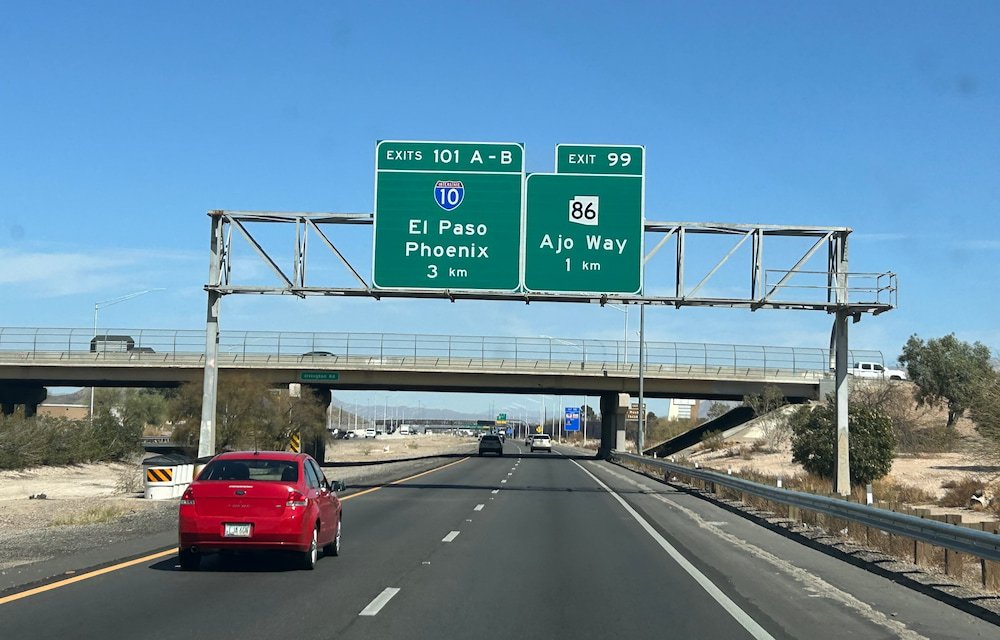
San Xavier Del Bac Mission
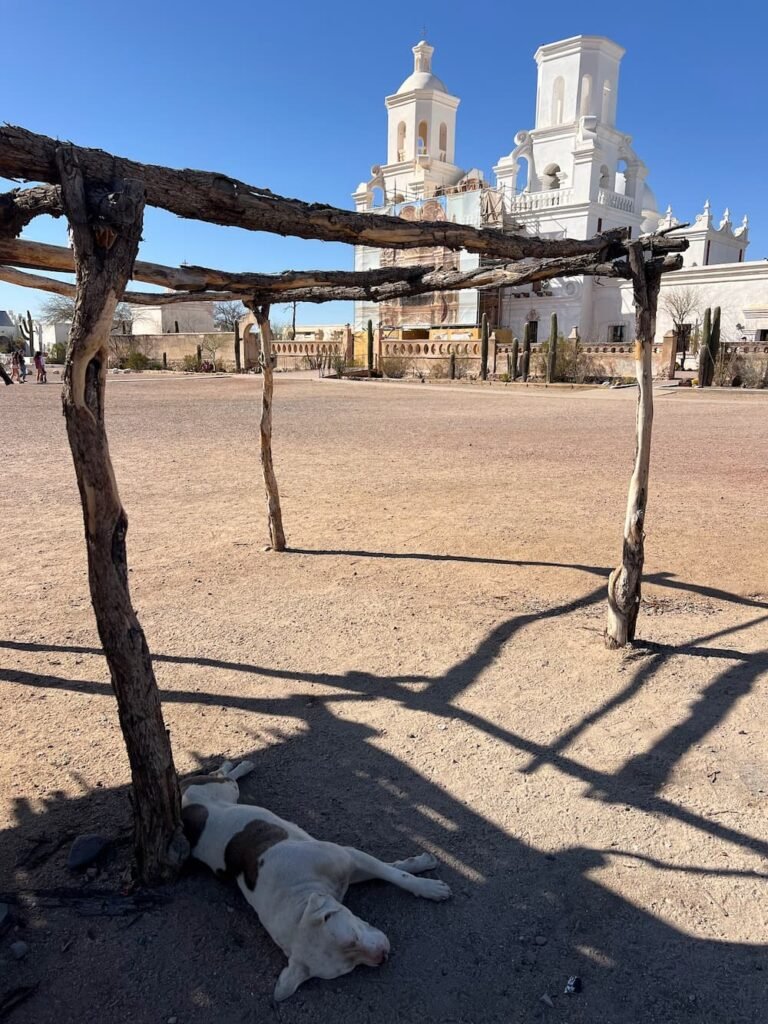
Our final stop for the day was San Xavier Del Bac Mission, a pristinely white Catholic church that was continuing to get renovations when we went. Known as the “White Dove of the Desert”, it was completed in 1797 when Southern Arizona was part of New Spain. Today, this National Historic Landmark on Tohono O’odham Tribal Lands is regarded as one of the finest examples of Spanish Colonial architecture in the US. Near the church there is a hill that you can walk up to with a grotto and a cross at the top. While we didn’t go all the way to the top, we did wander up and had a close encounter with a roadrunner!
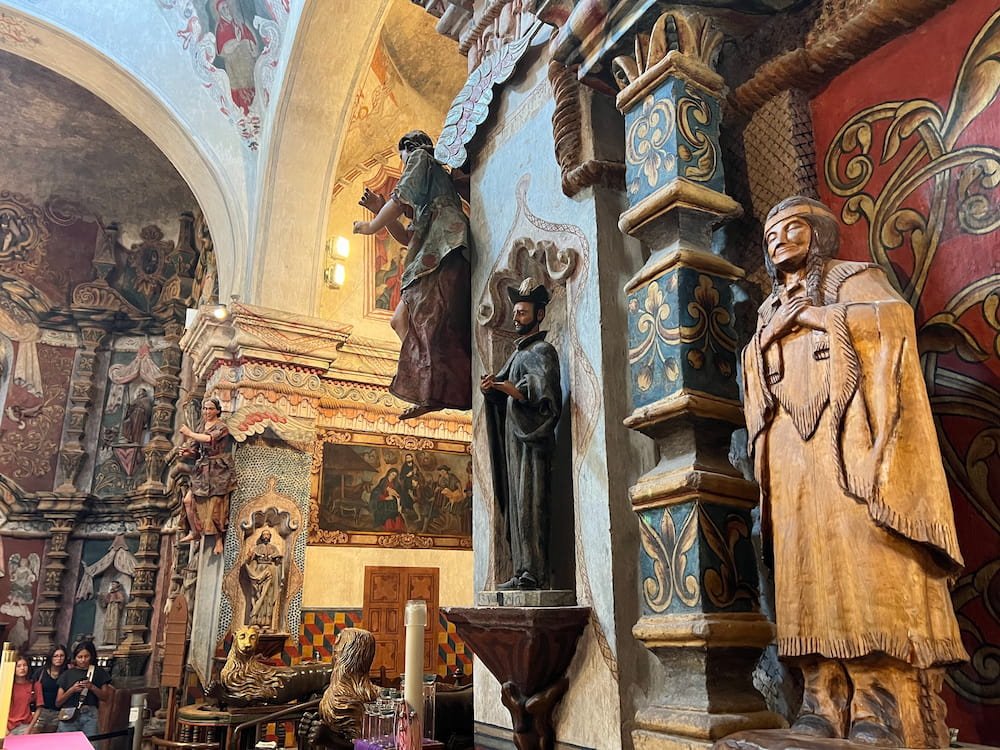
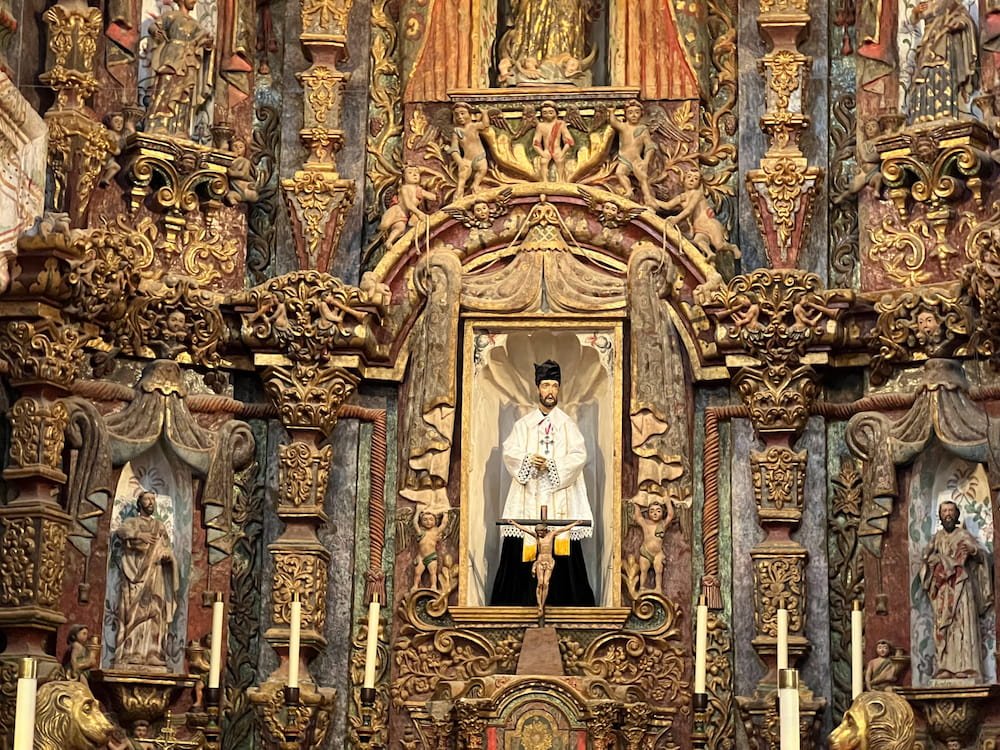
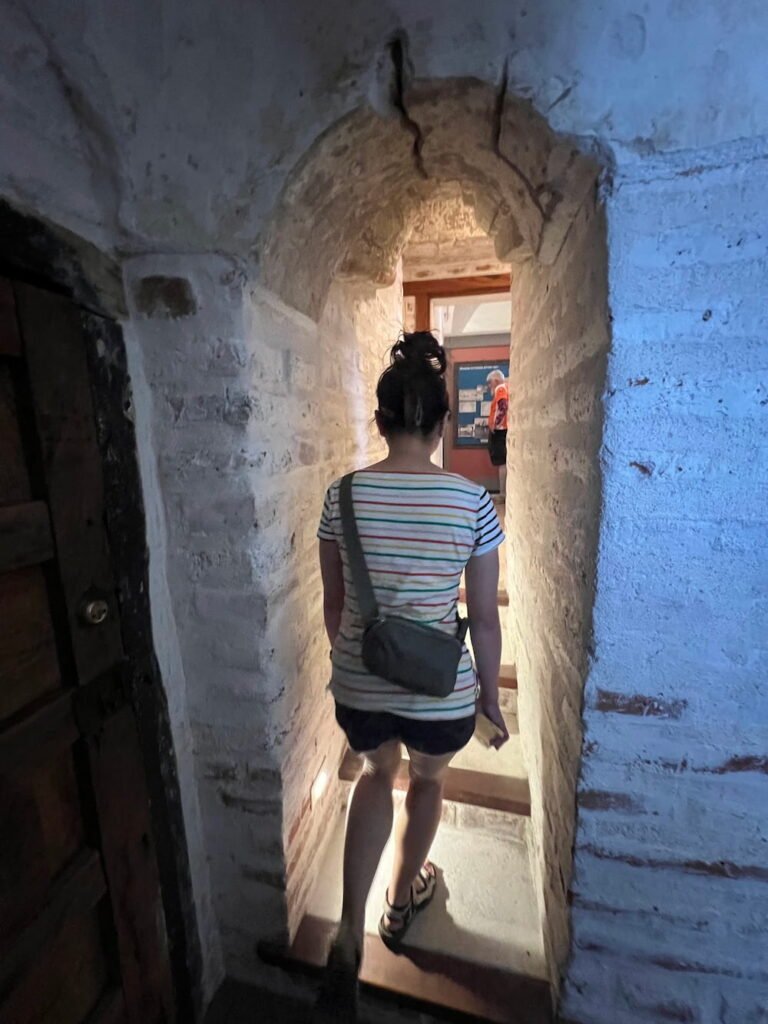
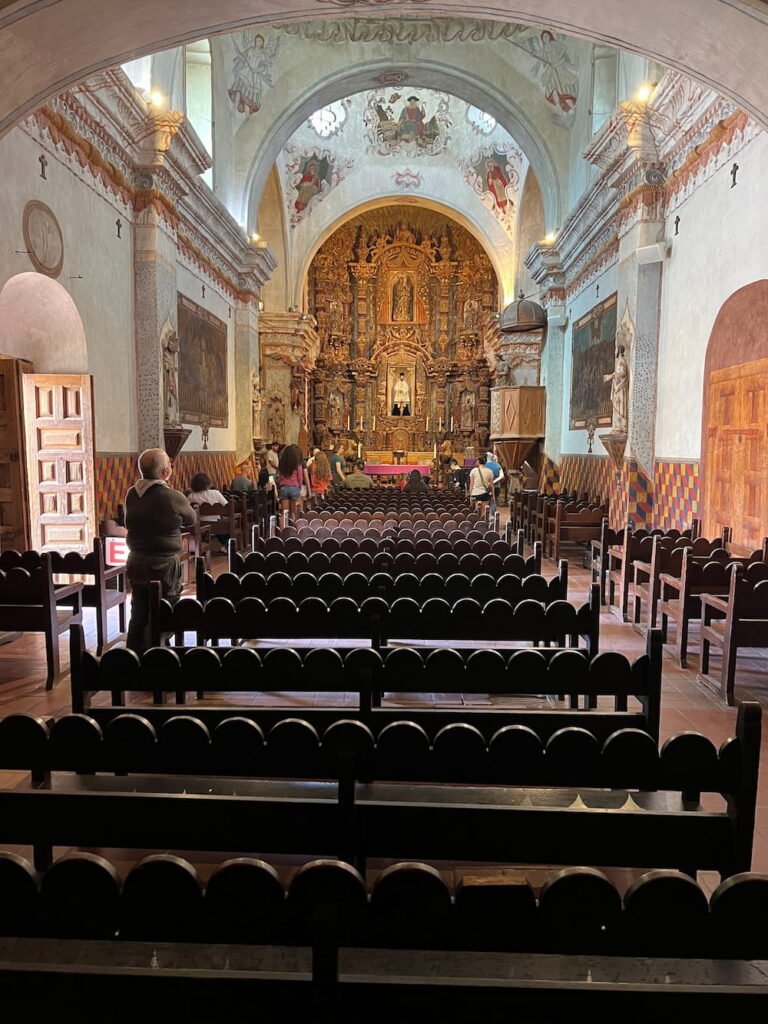
Bread and Hot Dogs
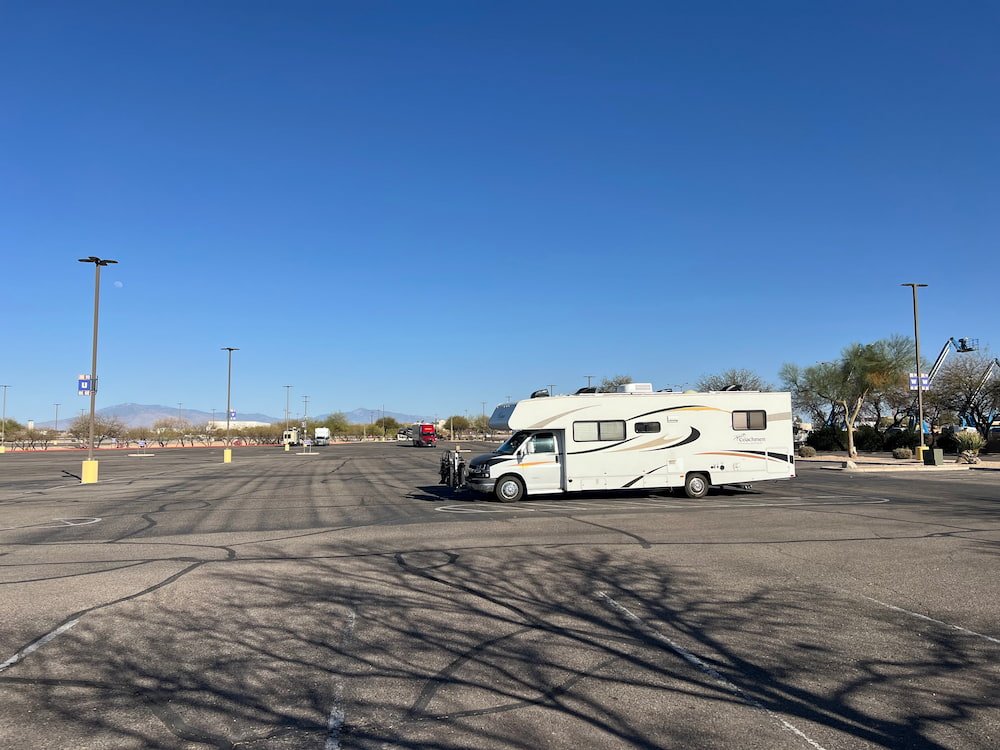
The next morning we continued to embrace the Tucson food scene, heading over to Barrio Bread, an Arizonan bakery (they have a branch in Tucson and Gilbert), which specializes in using traditional Sonoran grains and ingredients. They focus on sourdough loaves, and depending on what day of the week you go, they’ll use different grains in their other loaves for the day. We bought a regular sourdough and one with Khorasan, an ancient grain. Both were delicious–the crust is nice and crispy on the outside, while the bread inside is soft and fresh.
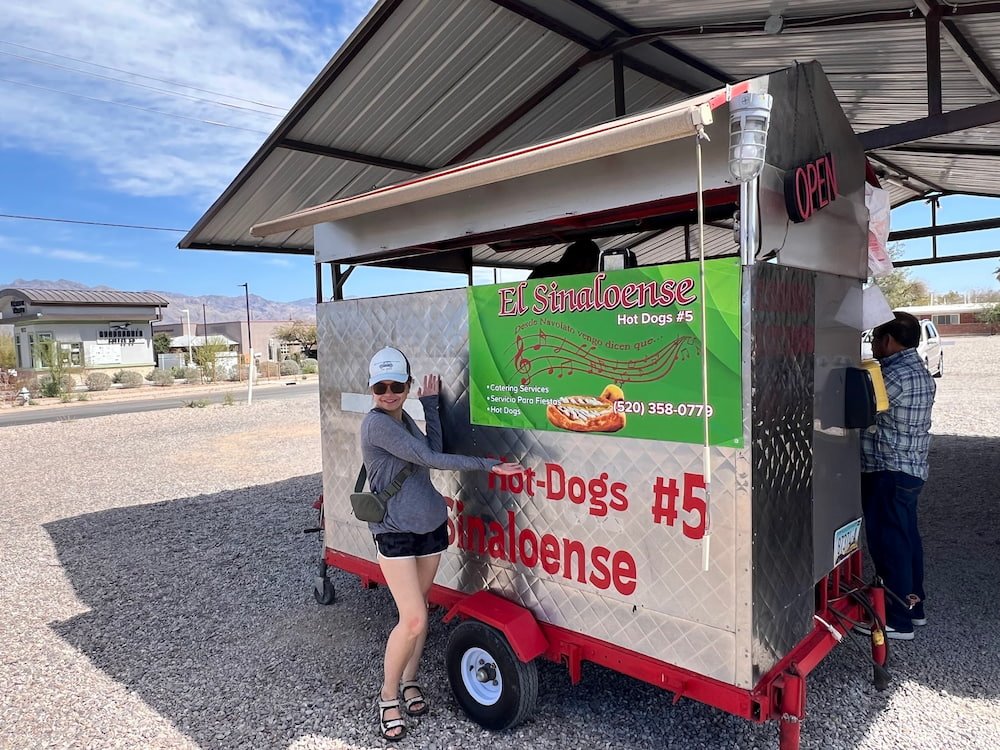
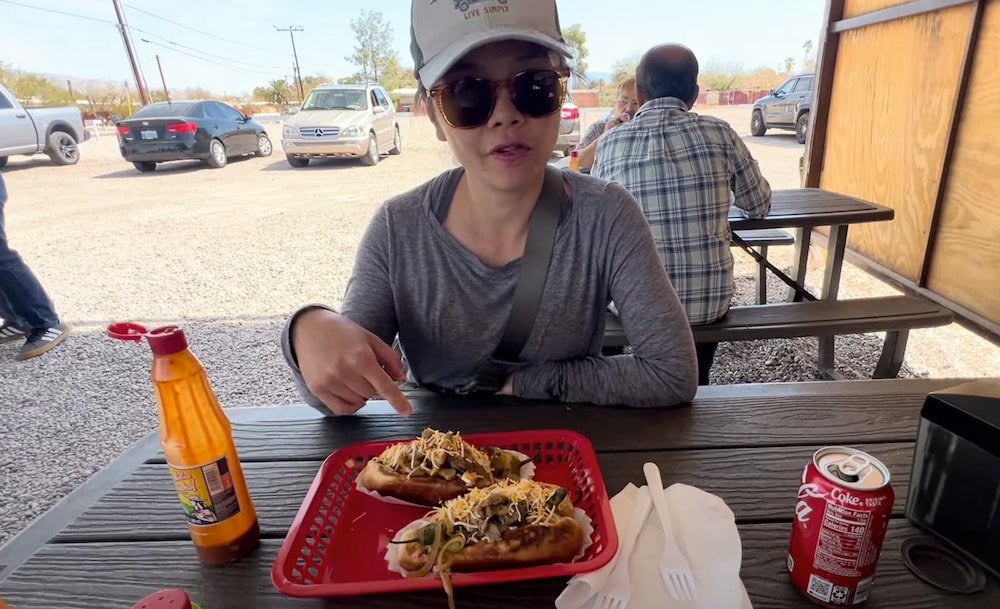
Our early lunch stop was at El Sinaloense hot dog cart, a tiny cart stationed on the side of a busy road, which is also set up with a few tables because it is extremely busy and popular! The cart is run by a man originally from Sinaloa in Mexico (hence the name), and the cart can only fit him and one other worker. A Sonoran hot dog from the area is known for being wrapped in bacon, as well as tomatoes, onions, beans, hot peppers, hot sauce and crema. You can also add more toppings, such as mushrooms, cheese, more hot sauce, etc. Lisette also was able to eat a vegetarian hot dog, and both were filling and delicious!
Thanks to our leaky toilet issue, we made our way to South Forty RV Resort, where we met the mobile RV mechanic who fixed the issue. Turns out the toilet was a bit loose, hence the leakiness. We also got a few other things fixed–including getting a better water pump (the one we had was excruciatingly noisy whenever we turned the water on), and getting the leaky front section of our RV sealed. It took several hours to fix, and it certainly was a lot of work, but necessary and hopefully the issue has now been fully resolved. At the very least, it was also nice to simply chill, do laundry and other errands, and get some rest.
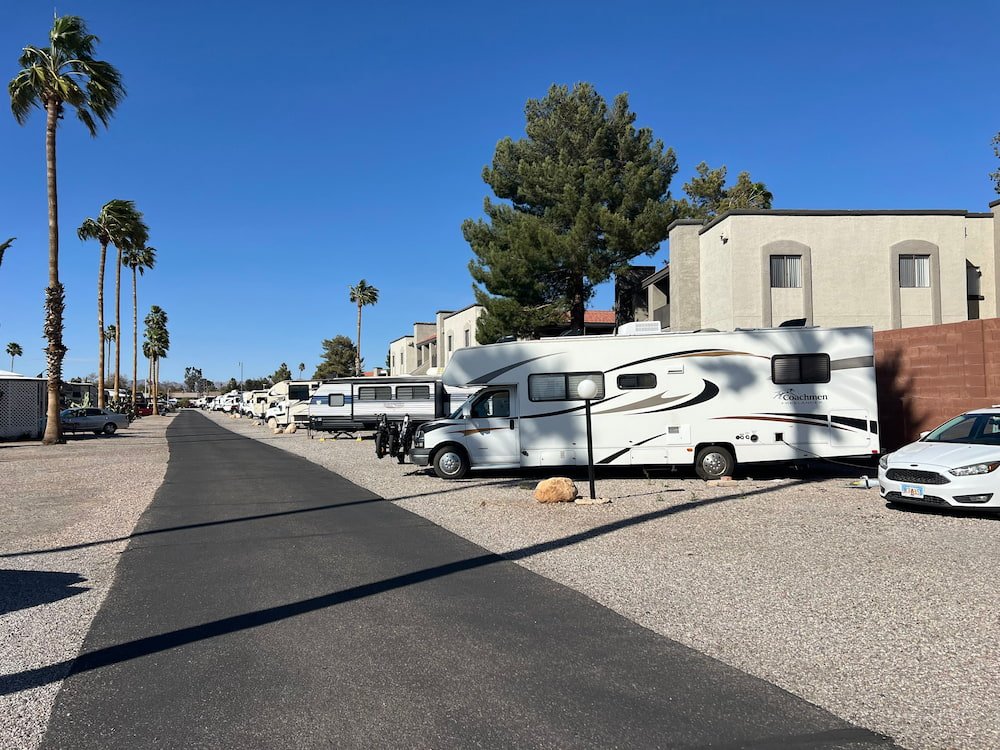
Route Map


[…] get our water pump repaired (we had to go here as the pump installed was purchased at this chain when we had issues about 50 days ago near Tucson), and were told to come in the following day at 10am. We swung by in […]